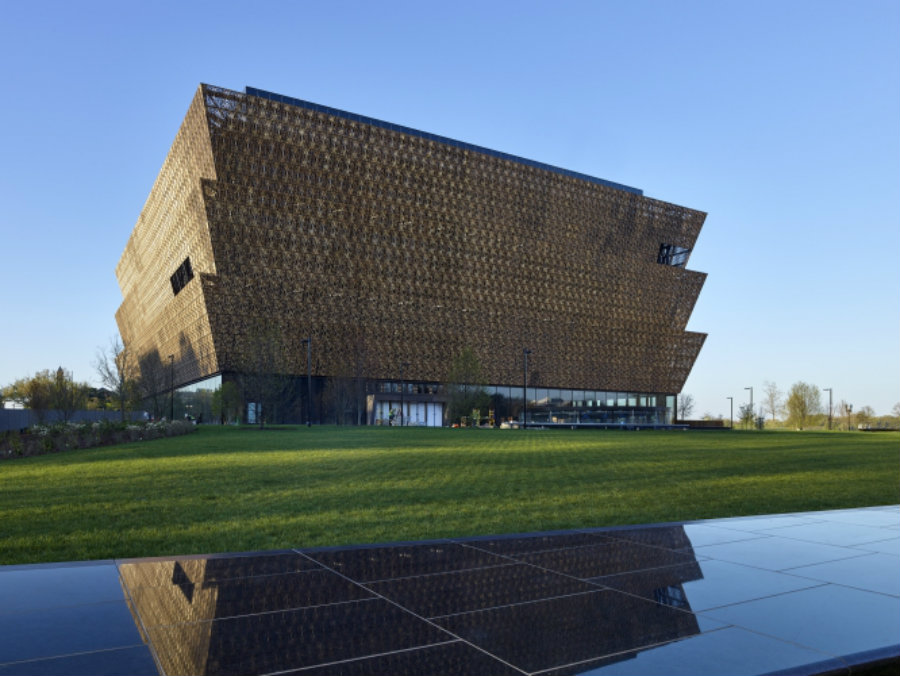The National Museum of African American History and Culture is inaugurated today after it was first proposed 100 years ago, and approved by Congress in 2003. The museum’s inauguration is being broadcast on C-SPAN, and President Obama is expected to make a statement somewhere along the celebration.
The structure encompasses 400,000 square feet, and it was built next to the Washington Monument. Entry is free, just like in the case of the other Smithsonian museums. The museum managed to raise $300 million in fundraising, exceeding its goal by $30 million. Over 100,000 donors participated, including Oprah, who donated $21 million.


A museum depicting American history from another perspective
The National Museum of African American History and Culture boasts over 30,000 items on its exhibits, highlighting the development of the African-American culture throughout the history of the United States. The exhibits focus on history, culture, freedom, segregation, and the impact of the black community on the United States as a whole.
Among the artifacts, there are the remains of a slave ship and a segregation-era train car. There’s also Chuck Berry’s red Cadillac, and a small metal box that Joseph Trammell manufactured in 1852 to keep his papers that proved he was a free black man.
The museum reminds visitors of the Jim Crow laws, which legalized and enforced segregation in the Southern United States from 1890 until 1965. African Americans were stigmatized and considered inferior by white Americans. Segregation was present in public schools, public transportation, bathrooms, public parks, the military, and even drinking fountains.
There’s also the casket of Emmett Till, a 14-year old African-American boy from Mississippi that was lynched, mutilated, and sunken in 1955 in the Tallahatchie River after he flirted with a 21-year-old white woman. His mother insisted on a public funeral with an open casket to expose the barbaric racism that led to his son’s death. Controversy rose after the lynchers eventually received support from the public. In the following months, Till’s killers were acquitted even if they publicly admitted that they had killed the young boy. The case was reopened, and Till was reburied in 2004.
“What artifacts do is, yes, they stimulate memory, but maybe more importantly what they do is humanize grand issues, so that you are not engaging with slavery, but an individual,” stated founding director Lonnie Bunch. “And so one of the challenges of any history museum is to be able to talk at a macro level but to have you feel at a micro level. And that’s what I think artifacts allow you to do.”
A nationwide celebration signaling progress and equality
The inauguration comes with a festival celebrating the African American culture with food samples, music, storytelling, and public acts of fellowship. All of it concluding with a concert featuring the Roots, Living Colour, and Public Enemy.
President Obama will be joined by the Bonners, an African-American family, in ringing the Freedom Bell, hailing from the First Baptist Church of Williamsburg the first black Baptist Church of the United States, established in 1776. Ex-president George W. Bush, who passed the bill to open the museum, is expected to attend the celebration with his wife, Laura Bush.
“From how we were enslaved and how we have become president, and how we have come writers in this country and professors” stated poet Sonia Sanchez at the opening ceremony, “we are a part of this great American landscape and you are going to remember us. You’re going to remember us when you come to this museum.”
To enter the museum, although it is of free admittance, visitors have to obtain a timed ticket. For the upcoming days, all tickets have been reserved, including those corresponding to weekends in the following months. Visitors should be patient and attentive to obtain their entry passes at this website.
The existence of a Smithsonian museum representing black history is a step forward in the United States struggle for inclusion and racial diversity, as its history would not have been the same without the restless fight for civil rights and equality.
From slavery to segregation, and up to the equal rights movements, African Americans fighting for their rights in their home country is the primary virtue of what it takes to be an American, which is why the museum collaborators feel so honored in taking part in building this collection of stories and artifacts that bring history to a palpable and real scenery.
The museum opens its doors amid one of the most concerning crises of racial-biased shootings, as the Black Lives Matter movement keeps on gaining pressure after the Charleston and Tulsa shootings, which occurred earlier this week.
Although each case appears to be isolated and without an apparent cause for civil unrest, any shooting where police killed a black man under dubious circumstances will add fuel to the fire. Perhaps the opening of the National Museum of African American History and Culture will serve as a truthful legacy claiming that black lives do matter, and they have since the beginning of the United States as a free country.
Source: Washington Post
